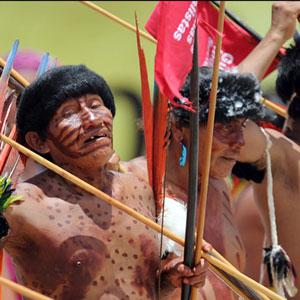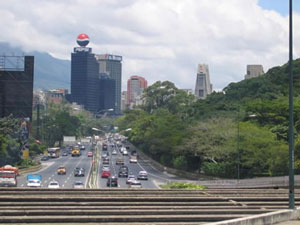
When the Spanish first arrived in Venezuela in the late fifteenth century, indigenous people belonging to three main ethnolinguistic groups inhabited the region: the Cariban, Arawak, and Chibcha. Today, Venezuela is composed primarily of mestizos (mixed races), with a very small pure Indian population, a notable populace of Caucasians (mostly from Europe), as well as Africans. Through 1990, the breakdown of race and ethnicity was about “68 percent mestizo, 21 percent unmixed Caucasian, 10 percent black, and 1 percent Indian." So what happened between then and now in Venezuelan history to cause such drastic changes in its population makeup? Here’s a quick look at Venezuelan history to trace how racial and ethnic trends developed across time.
Before Europeans ever set foot in the area we now know as Venezuela, Indians lived in the region, belonging to a number of distinct tribes. Some devoted themselves to agriculture and fishing, whereas others lived in the Amazon jungle. The Caquetío developed a more sophisticated civilization in what is today, known as the Falcón state. However, it is important to note that Venezuela never had a large Indian population compared to that of other regions in Latin America.
Interestingly, Christopher Columbus was the first European to set foot on Venezuelan soil during his search for a passage to Asia, on August 1, 1498. The country, named Venezuela, a year later by another Spanish explorer, Alonso de Ojeda, means “Little Venice.” Established in 1521, Cumana was the first Spanish settlement on the mainland.
During the colonial period, the majority of the growing white population in Venezuela migrated primarily from Spain. Racial mixing began almost immediately, as the earliest conquerors brought no Spanish women with them, and therefore often formed common-law relationships with Indian women, leading to offspring; most were recognized and legitimized by their fathers.
At this time, the economy was primarily agricultural and required a vast amount of human labor. When the native population began to fail to meet these needs, they began importing African slaves — ironically, not directly from Africa but from other nearby colonies such as the West Indies. Here, racial mixing occurred as well, and the children of master and slave were often freed and sometimes even educated.
Thus, almost from its colonial beginnings, Venezuela enjoyed a rather fluid ethnic makeup. However, the Venezuelan social structure formed a rigid organization between the class and racial lines, headed by the more or less pureblooded unmixed Europeans and rounded out by their laborers/slaves at the bottom of the tier. There was also a small middle class, primarily made up of less successful whites and some mestizos.
Reforms in the eighteenth century affected race relations by enhancing the social mobility of the crown’s non-white subjects, which allowed mestizos or pardos, to join the militia, obtain an education, and even hold public office. Concurrently, a distinct shift took place in which new generations began to see themselves as Venezuelans. The criollos (who were Venezuelan but of direct Spanish descent) formed the leadership of a new national system, which eventually led to the Venezuelan independence from Spain on July 5, 1811. Following its independence, however, the society changed very little, as the criollo upper class continued to hold power over a small middle class and quite expansive lower class.
 Over the course of the nineteenth century, shifts continued to occur that profoundly affected the societal structure in Venezuela, starting with the move to coffee production (a much less labor intensive enterprise), and the establishment of Venezuela as a leader in the petroleum market (by 1928, Venezuela had become the world’s leading exporter). These shifts turned a more agrarian society into an urban and industrial one, with the expansion of the middle class and a marked increase in the mixing of ethnic groups.
Over the course of the nineteenth century, shifts continued to occur that profoundly affected the societal structure in Venezuela, starting with the move to coffee production (a much less labor intensive enterprise), and the establishment of Venezuela as a leader in the petroleum market (by 1928, Venezuela had become the world’s leading exporter). These shifts turned a more agrarian society into an urban and industrial one, with the expansion of the middle class and a marked increase in the mixing of ethnic groups.
In Venezuela today, these three racial groups (white, Indian, and African) still compose the majority of its population. However, given the fluidity of ethnicity in Venezuelan society, few groups have stayed isolated — hence, the country’s large mestizo population. There are a few settlements of coastal blacks who retain more of their African and West Indian identity, and there are isolated tribes who remain, particularly in the Amazon area. Likewise, the Guajiro Indians endured, and still live on the Peninsula de la Guajira and the Colombian border.
Sources:
Haggerty, Richard A., Ed. 1990. Venezuela: A Country Study. Washington: GPO for the Library of Congress. http://countrystudies.us/venezuela/.
U.S. Department of State (Bureau of Western Hemisphere Affairs) “Background Note: Venezuela.” http://www.state.gov/r/pa/ei/bgn/35766.htm.

Comments
Venezuela
Many of these things happened throughout Latin American and the Caribbean. It definitely shows how the system of racism in colonialism took in part in affecting society today.